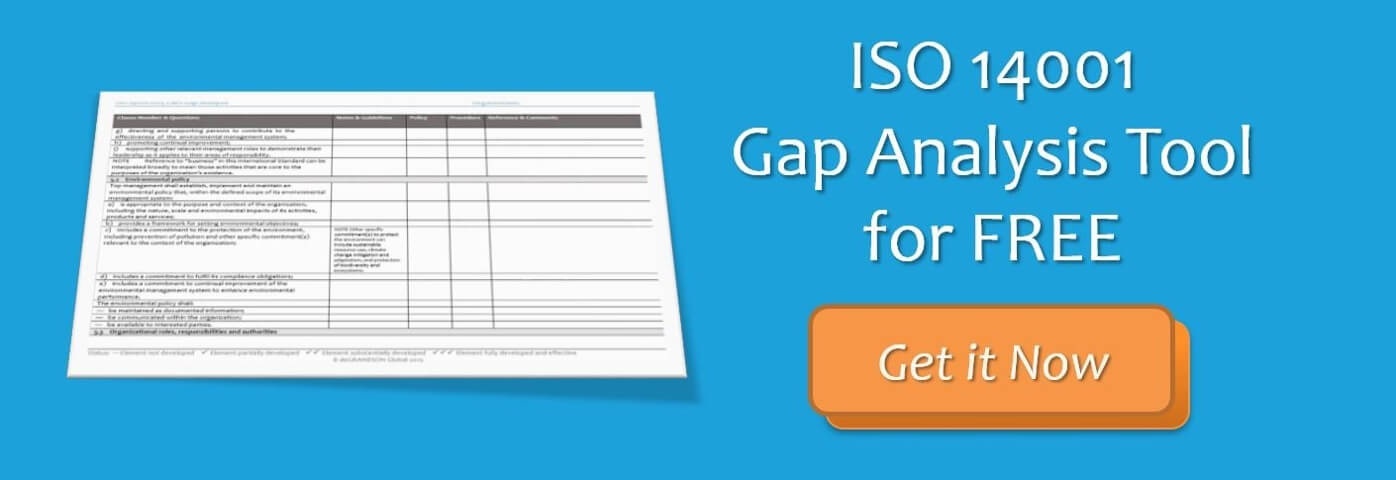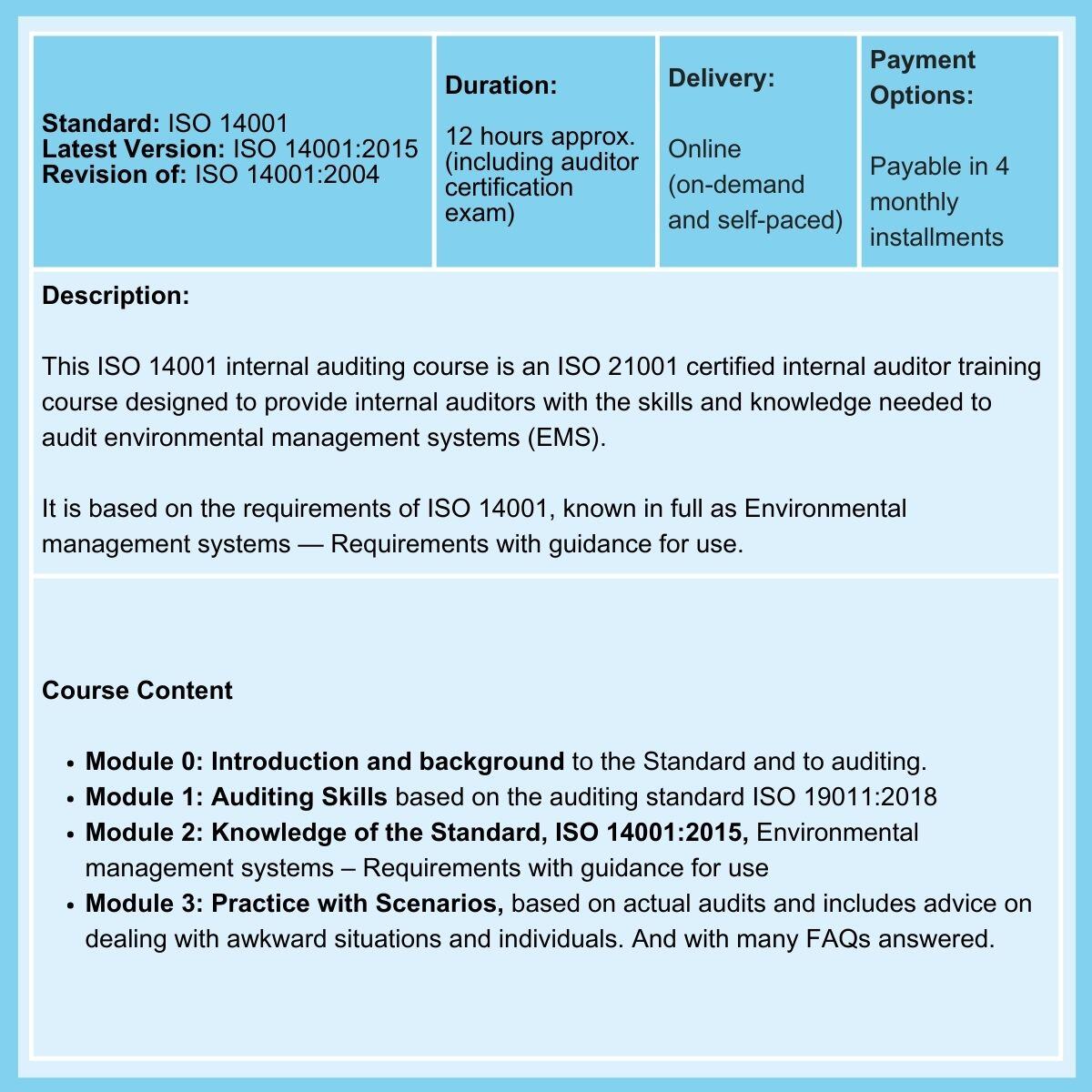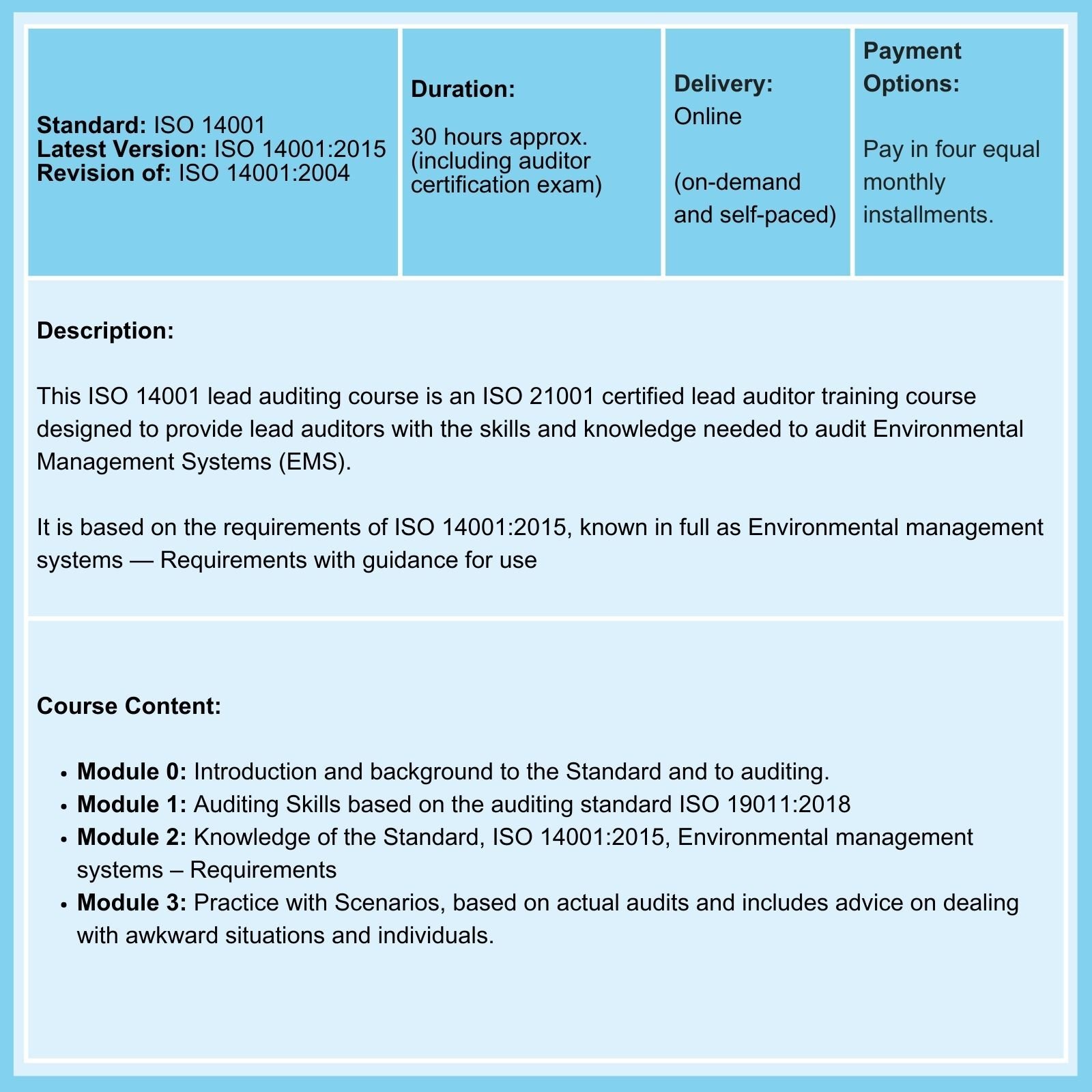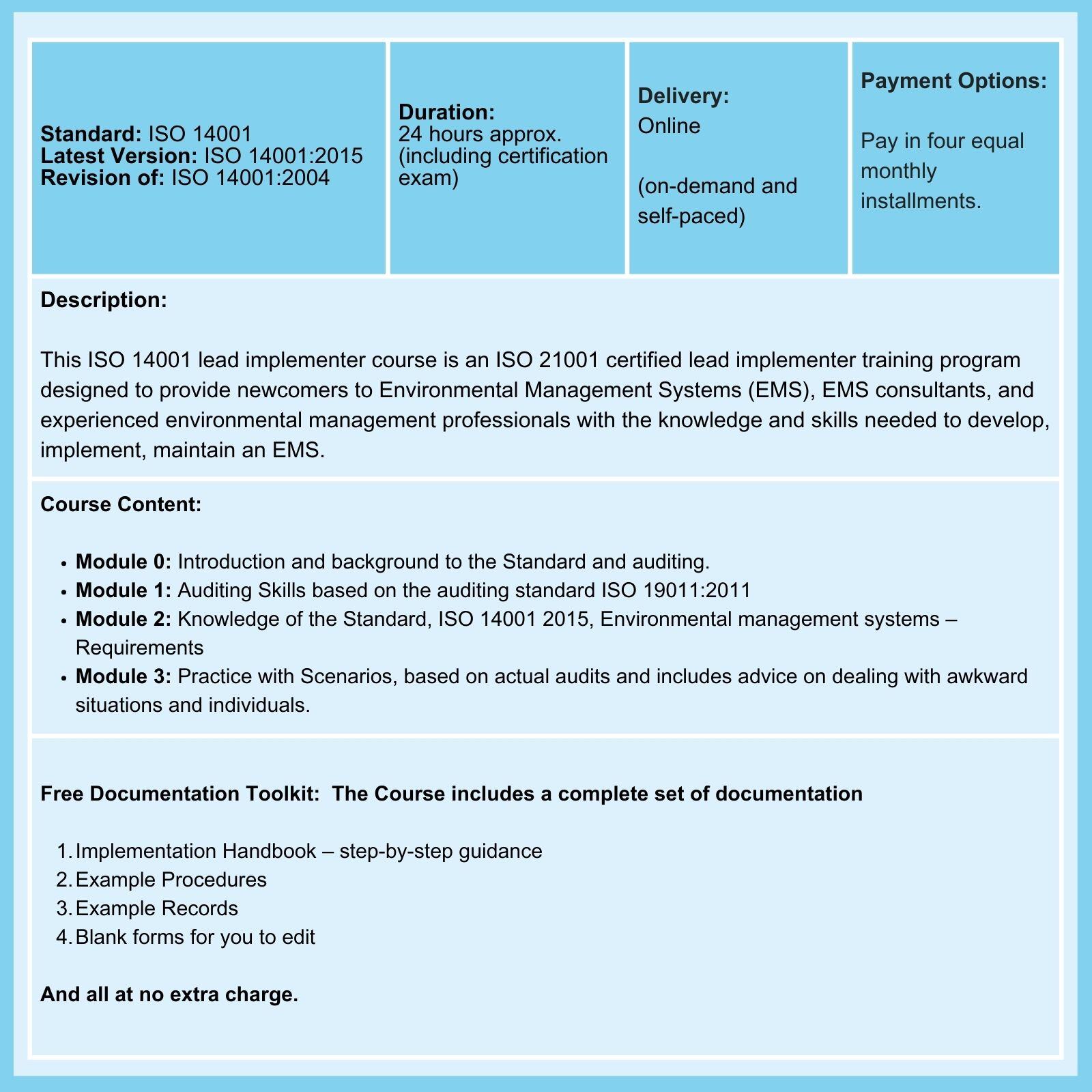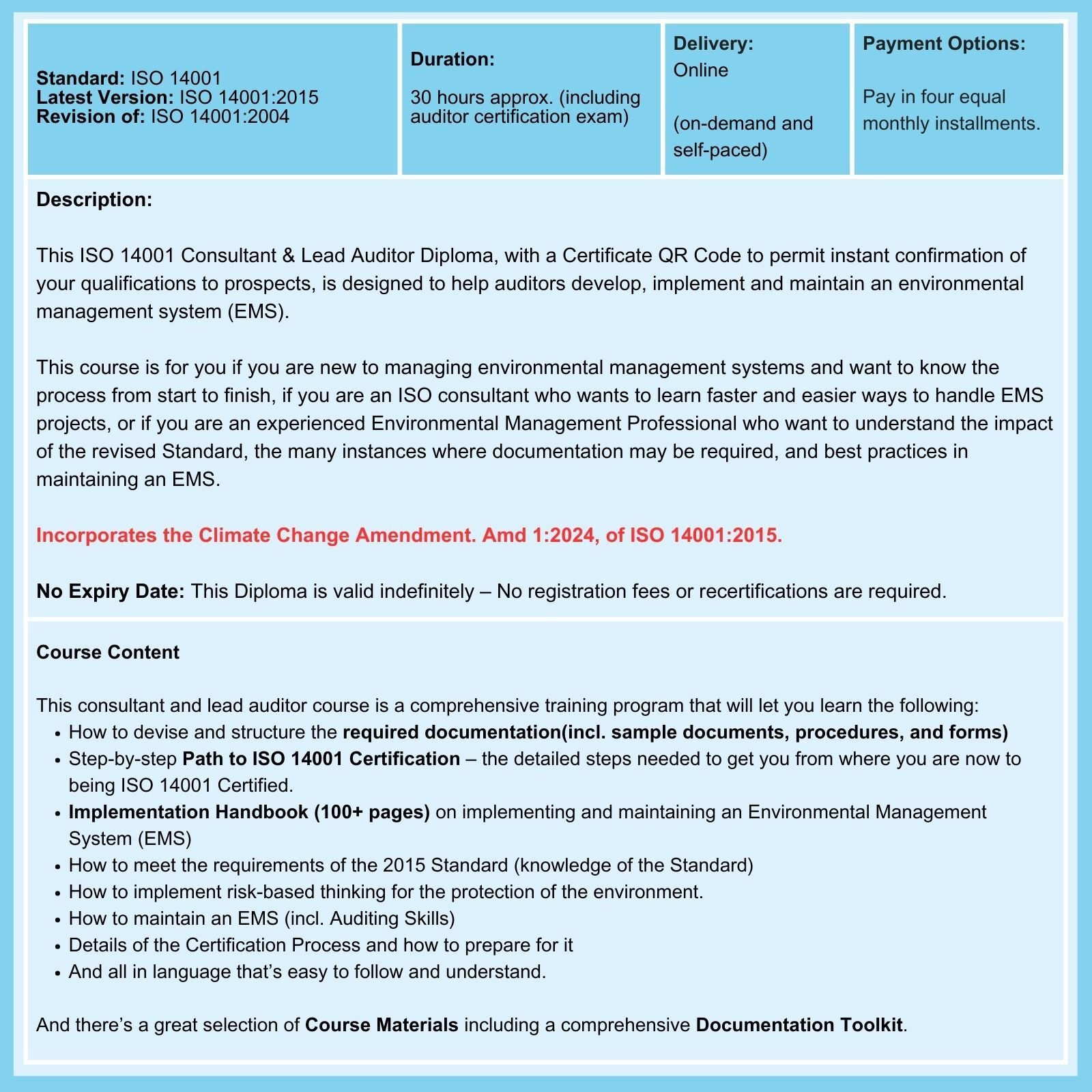
Systematically identifying relevant ISO 14001 environmental aspects in implementing an EMS.
This is fundamental to the effectiveness of an Environmental Management System (EMS) and to ensuring that your organization meets ISO 14001 certification requirements.
Definition of Environmental Aspects
Environmental Aspects refer to the elements of an organization's activities, products, or services that interact with the environment.
Identifying and understanding Environmental Aspects is a crucial step in developing and implementing an Environmental Management System (EMS) that complies with the requirements of the ISO 14001 standard.
ISO 14001 and Environmental Aspects
ISO 14001 provides a structured framework for identifying, assessing, and managing environmental aspects. It ensures that organizations minimize their environmental footprint and adhere to sustainable practices.
Below are some critical points in ISO 14001 that relate to Environmental Aspects.
- Identification: You need to identify all aspects of your activities, products, and services that can potentially interact with the environment. This includes both direct and indirect aspects.
- Assessment: Each identified environmental aspect should be evaluated to determine its significance. Significance is typically determined by considering the aspects' potential environmental impacts, the frequency of occurrence, and the legal and regulatory requirements associated with them.d
- Impact Evaluation: Environmental aspects can have both positive and negative impacts on the environment. Because of this, you should assess and prioritize these aspects based on their potential to cause harm or benefit the environment.
- Documentation: ISO 14001 requires organizations to document their process for identifying and assessing environmental aspects. This documentation is typically part of the EMS and includes the criteria for evaluating significance.
- Monitoring and Control: You must establish controls and procedures to manage and reduce the significant environmental aspects. This may involve setting objectives and targets for improvement, implementing operational controls, and monitoring progress.
- Legal and Regulatory Compliance: Compliance with applicable environmental laws and regulations is essential to managing environmental aspects. You must ensure that your organization meets all legal requirements related to your significant aspects.
- Continuous Improvement: ISO 14001 promotes a commitment to continual improvement. Therefore, it is important to regularly review and reassess your company's environmental aspects and their significance to adapt to changing circumstances and improve your environmental performance.
Why are Environmental Aspects Important to ISO 14001 Implementation?
Environmental Aspects, as outlined in ISO 14001 Clause 6.1.2, are essential to ISO 14001 implementation. This is because failing to include them will:
- They undermine EMS's credibility with stakeholders (if a customer spots a significant omission, what will that say to them about your organization?), represent a loss to your business (perhaps a considerable cost-saving missed), and cause unnecessary environmental damage.
- Also, as an ISO 14001 Lead Implementer or EMS Consultant, you will not want to leave significant omissions for an External Auditor to find. You will want an environmental aspects and impacts register that is ISO 14001 compliant.
Examples of Environmental Aspects
Environmental aspects cover various elements of an organization's activities, products, or services that interact with the environment. By identifying and understanding these aspects, you can effectively integrate environmental considerations into your operations in accordance with ISO 14001 standards.
Here are some examples of environmental aspects you need to know...
- Energy Usage includes aspects related to energy consumption, such as electricity and fuel, within an organization's operations. Energy use can have a significant environmental impact, particularly if it relies on non-renewable energy sources.
- Water Quality Management: Organizations that discharge wastewater into water bodies must consider the impact on water quality and ecosystems.
- Emissions: Emissions of greenhouse gases (e.g., carbon dioxide), air pollutants (e.g., sulfur dioxide), and volatile organic compounds (VOCs) are important aspects, especially for industries with combustion processes or chemical operations.
- Waste Management: Generating solid, hazardous, or wastewater is a common environmental aspect. Proper waste management and recycling efforts can help mitigate the environmental impact.
- Chemical Usage: Chemical use and handling in manufacturing, cleaning, or other processes can impact the environment. Managing chemical use and minimizing spills or releases are critical.
- Biodiversity Impact: Activities that encroach on natural habitats, deforestation, or pollution that affect local ecosystems and wildlife are also environmental aspects.
- Noise Pollution—Noise and vibrations from industrial processes or construction activities can be considered environmental aspects. Noise pollution prevention, therefore, must be carefully planned if your organization operates in areas with sensitive ecosystems or residential neighborhoods.
- Resource Depletion: Aspects related to the depletion of natural resources, such as minerals, timber, or fossil fuels, are important to consider in the context of sustainability and environmental impact.
- Land Use and Land Contamination: The use of land for industrial or agricultural purposes and potential land contamination from chemicals or pollutants are significant aspects.
- Packaging and Product Design: The choice of materials and the design of products and packaging can influence the environmental impact, including resource use, emissions, and waste generation.
- Transportation: For organizations involved in transportation, the type of vehicles used, fuel efficiency, and maintenance practices can be environmental aspects.
- Sustainable Procurement: The choice of suppliers, materials, and products can influence the environmental impact. Ensuring sustainable and eco-friendly procurement practices is an aspect to consider.
How to Identify the Environmental Aspects of Your Organisation
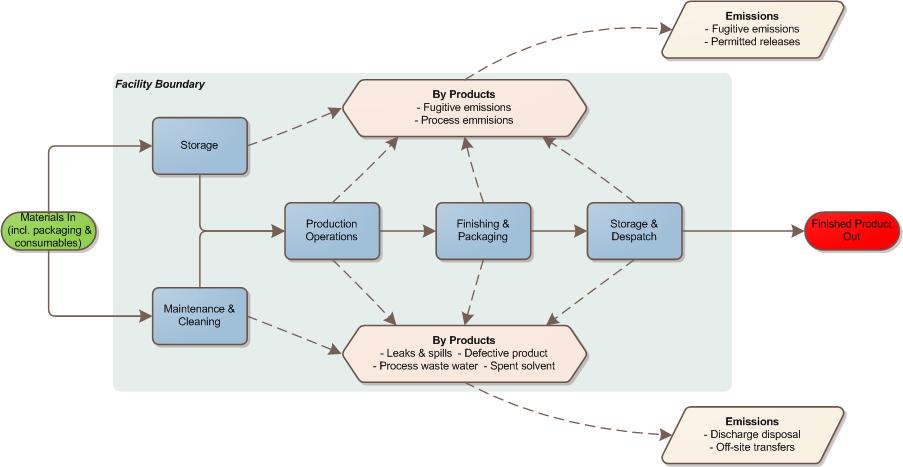
Look at the Process from a Life Cycle Perspective
When implementing ISO 14001:2015, identifying all applicable environmental aspects is fundamental. And in determining those environmental aspects, you must consider a life cycle perspective. The applicable life cycle stages will vary depending on the activity, product, or service.
You need to determine or re-determine the environmental aspects within the scope of the environmental management system. Consider the inputs and outputs (both intended and unintended) associated with current and relevant past activities, products, and services; planned or new developments; and new or modified activities, products, and services.
In the future, this will have to include new or revised systems of working. How, for example, will your EMS address home working, which will fall within the scope of your EMS?
Know What to Include in Your Organization's Environmental Aspects
The method should consider normal and abnormal operating conditions, shut-down and start-up conditions, and reasonably foreseeable emergencies. Attention should be paid to prior occurrences of emergency situations.
You do not have to consider each product, component, or raw material individually to determine and evaluate its environmental aspects. When they have common characteristics, you may group or categorize activities, products, and services.
Look Into the Environmental Aspects that Your Organization Can Influence
An organization determines whether there are environmental aspects that it can influence in addition to those that it can control directly.
These can be related to products and services used by the organization provided by others, as well as products and services that it offers to others, including those associated with outsourced processes.
It can have limited influence on the use and end-of-life treatment of products and services provided to others.
Ultimately, the organization determines the extent of control it can exercise, the environmental aspects it can influence, and the extent to which it chooses to exercise such influence.
Seek Help with Identifying Other Environmental Aspects
It is unlikely that one person can satisfactorily complete this exercise alone. A team of people with relevant experience and expertise is needed. The Team you need will primarily work for your organization, but external experts may also be required.
If you need more clarification, talk to a reputable expert or consultant and their clients before engaging their services. Begin the identification of Environmental Aspects by brainstorming with your Team.
And deGRANDSON Training will always help...
One of our ISO 14001 Series of Courses, ISO 14001 Lead Implementer, includes detailed identification, risk analysis, and risk treatment of Environmental Aspects.
Alternatively, suppose you want a quick refresher on ISO 14001. In that case, you can also get answers to frequently asked questions about the standard, the training involved, and the certification process on our ISO 14001 course overview page.
Related Courses
Related Articles
- The ISO 14000 Family of Environmental Standards
- ISO 14001 Consultancy: How to be an EMS Consultant?
- How to do an ISO 14001 Gap Analysis
- Preparing for an ISO 14001 Certification Audit
- ISO 14001 Free Implementation Handbook (100+ pages)
deGRANDSON Global is an ISO Certified Educational Organization
In October 2021, we secured certification to three education-related ISO Standards. We now have a university-grade management system in place that conforms to the requirements of …
We have chosen ISO 21001 certification because, unlike IRCA and Exemplar badges (which, in our opinion, are commercially compromised), it is based on independent third-party assessment. It is a 'university grade' standard globally by schools, colleges, and universities to demonstrate their competence.
We offer Courses in ISO 9001, ISO 13485, ISO 14971, ISO 17025, ISO 27001, ISO 31010, and ISO 45001.
